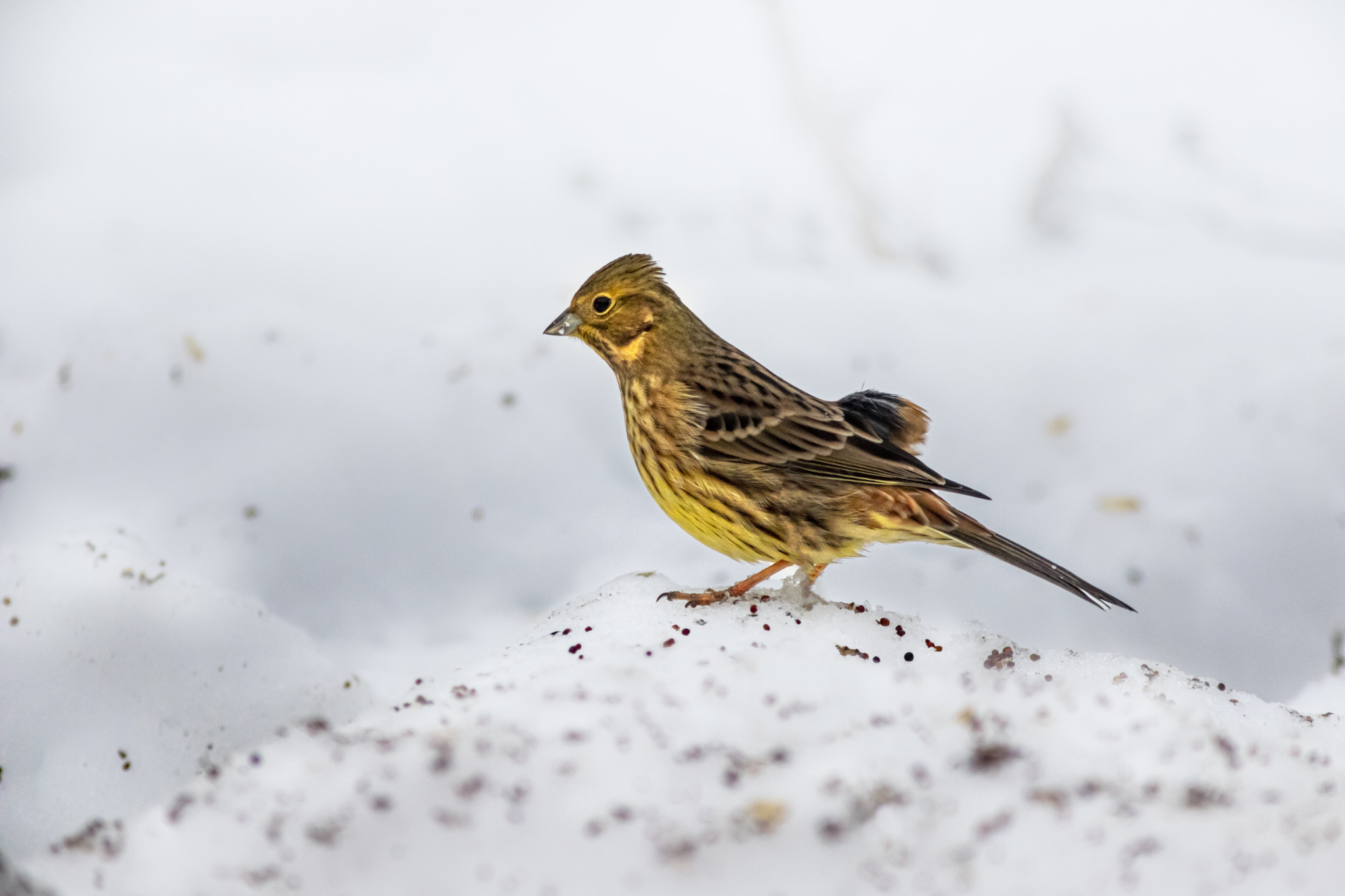The Yellowhammer (Emberiza citrinella) is a striking and distinctive bird species belonging to the bunting family, Emberizidae. Here’s a detailed description:
Physical Characteristics: The Yellowhammer is a medium-sized bird, with adults typically measuring around 16 centimeters in length. It has a sturdy build, with a rounded body, short tail, and conical bill. Male and female Yellowhammers have different plumage. Adult males have bright yellow heads and underparts, with chestnut-brown streaks on their backs, wings, and flanks. They also have a distinctive black mask-like marking on their face. In contrast, females and juveniles have more subdued plumage, with pale yellowish-brown underparts and less intense streaking.
Habitat and Distribution: Yellowhammers are native to Europe and parts of Asia, where they inhabit a variety of open habitats, including farmland, grasslands, heathlands, and scrublands. They are particularly common in agricultural landscapes with hedgerows, field margins, and scattered trees or bushes, which provide suitable nesting sites and foraging opportunities.
Behavior and Diet: Yellowhammers are primarily ground-feeding birds, foraging for seeds, grains, and insects on the ground or low vegetation. They may also feed on fruits, berries, and occasional small invertebrates. Their diet varies seasonally, with seeds and grains being more prevalent in the winter months and insects being more abundant during the breeding season. Yellowhammers are often seen perched on fences, shrubs, or wires, singing their distinctive song or engaging in territorial displays.
Reproduction: During the breeding season, which typically occurs from April to July, male Yellowhammers establish territories and sing to attract mates. Females build cup-shaped nests on the ground or low in vegetation, using grass, twigs, and other plant materials, and line them with finer materials such as feathers or hair. They lay a clutch of 3 to 5 eggs, which they incubate for about two weeks. Both parents participate in feeding and caring for the chicks until they fledge and become independent.
Conservation Status: The Yellowhammer is classified as a species of least concern by the International Union for Conservation of Nature (IUCN), with stable populations throughout much of its range. However, it may face localized threats due to habitat loss, intensification of agriculture, and changes in land management practices. Conservation efforts focused on preserving and restoring suitable habitats, including hedgerows, grasslands, and mixed farmland, are essential for ensuring the continued survival of this iconic bird species.
Overall, the Yellowhammer is a beloved and recognizable bird species, valued for its bright plumage, melodious song, and presence in agricultural landscapes. Its distinctive appearance and behavior make it a favorite among birdwatchers and nature enthusiasts across its native range.
Views: 313
Subscribe to the newsletter:
